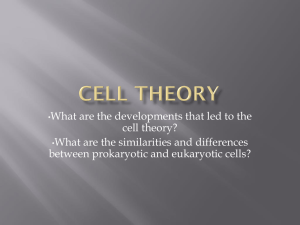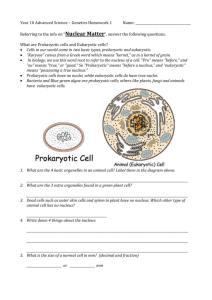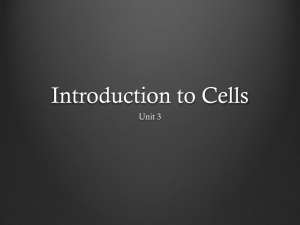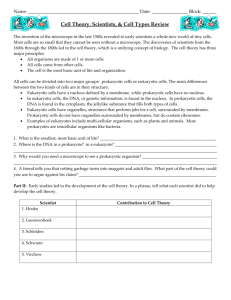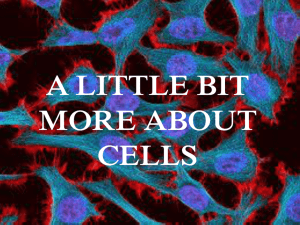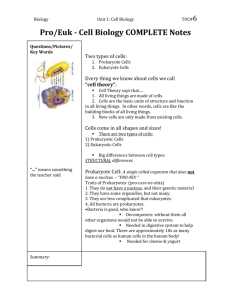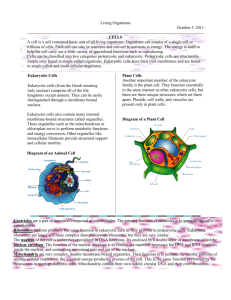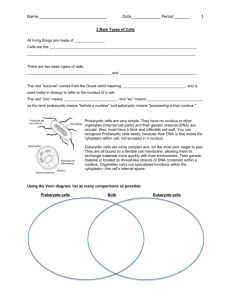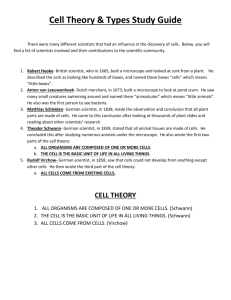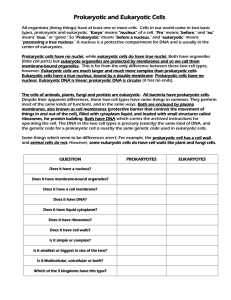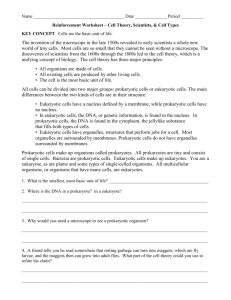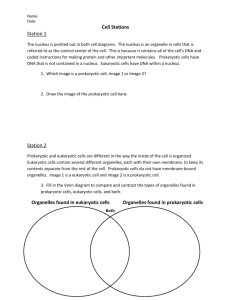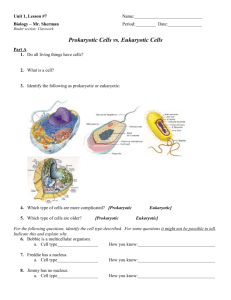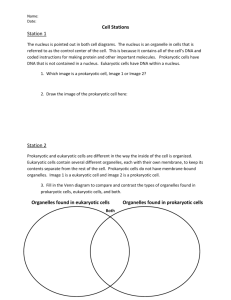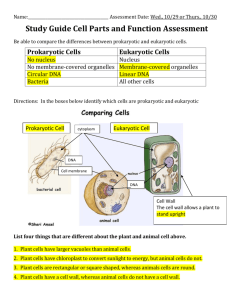Do Now:
advertisement
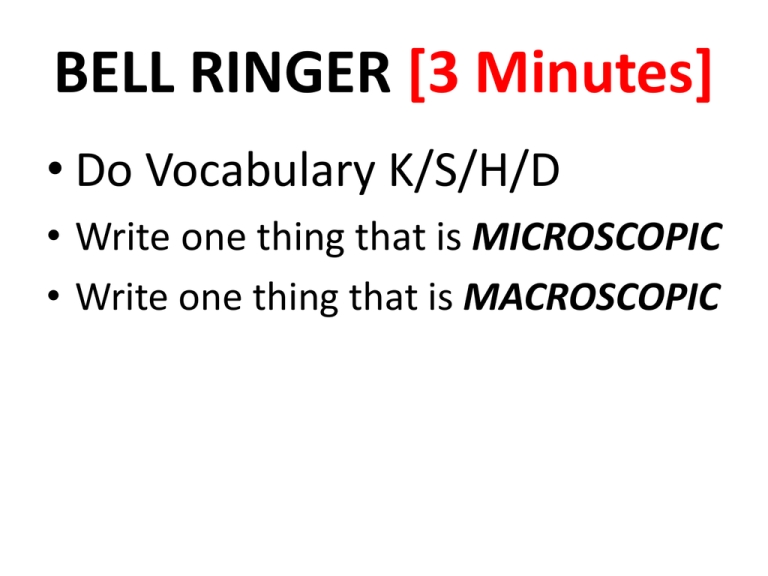
BELL RINGER [3 Minutes] • Do Vocabulary K/S/H/D • Write one thing that is MICROSCOPIC • Write one thing that is MACROSCOPIC MYP Biology: Introduction to Cells What are the points of the Cell Theory? 1. The cell is the most basic unit of LIFE. 2. All ORGANISMS are made up of cells. 3. All new cells come from PRE-EXISTING cells There are two main types of cells • Prokaryotic cells (Greek for ‘before nucleus’) • Eukaryotic cells (Greek for ‘true nucleus’) What do all cells have in common? • DNA: The genetic material / blueprint of the cell • Cytoplasm: A jelly-like substance the fills the inside of the cell and contains enzymes What do all cells have in common? • Cell Membrane: A protective barrier that controls what goes in and out of the cell • Ribosomes: Tiny cell parts that produce proteins Prokaryotic Cells Prokaryotic cells are the smaller, simpler variety of cells. They have no nucleus or any other specialized, membrane-bound organelles. Only unicellular bacteria are made up of prokaryotic cells. Prokaryotic Cells Eukaryotic cells Eukaryotic cells are the larger, more complex variety of cells. Their DNA is contained in a section of the cell called the nucleus. They also contain a different types of membrane-bound organelles that perform specific functions. Eukaryotic cells Compare & Contrast Prokaryotes and Eukaryotes SIZE PROKARYOTIC EUKARYOTIC NUCLEUS? ORGANELLES? DNA? 1-10 microns NO NO (tiny cell parts) YES (free-floating) 10-100 microns YES YES YES (in nucleus)
